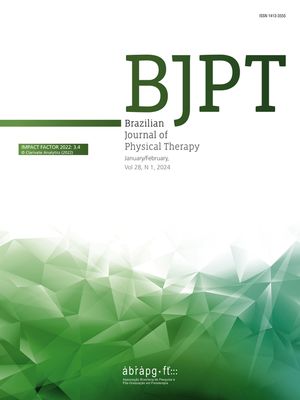
1st STUDENT SCIENTIFIC CONFERENCE OF THE BRAZILIAN ASSOCIATION FOR RESEARCH AND POSTGRADUATE IN PHYSIOTHERAPY (ABRAPG-FT)
More infoDue to the COVID-19 pandemic, changes were necessary in the field of physiotherapy, requiring new models of care that could be promoted by telerehabilitation. Therefore, a group of individuals with Parkinson's disease (PD), who before the pandemic performed face-to-face physical therapy, had their way of treatment replaced by a telerehabilitation program consisting of synchronous remote sessions of physical therapy, provision of graphic material and videos about physical and cognitive exercises and health education activities.
ObjectivesTo understand the meaning of the experience of individuals living with PD regarding a telerehabilitation protocol.
MethodsThis is a qualitative descriptive analytical study with a phenomenological basis in which 20 individuals with PD who participated in a telerehabilitation protocol for 6 months were included. They were interviewed by telephone calls recorded, guided by a semi-structured script. The interviews were transcribed, categorized, and analyzed, based on the principles of phenomenology following assumptions by Martins and Bicudo (1989). Data analysis was performed in the following stages: transcripts reading; division of the whole transcripts into units of meaning and interpretation; grouping units of meaning in units themes; interpretative synthesis regarding the content of the themes generated by the grouped units of meaning.
ResultsFrom the qualitative analysis, four themes emerged that configure the structure of the phenomenon: 1) Expectations related to physiotherapy through telerehabilitation during the pandemic (includes feelings and thoughts about the expectations related to the beginning of remote physiotherapy after interruption of face-to-face treatment); 2) Experiences of the new daily life (includes the perceptions about the experiences of the new daily life that was configured from the proposed protocol, including the relationship with technology, the perceived changes and the new learnings); 3) Perceptions about themselves in relation to the proposed telerehabilitation program (includes participants' perceptions of themselves during their immersion in the telerehabilitation program); 4) A look at the protocol (includes the opinions and feelings about the protocol and preferences of the participants in relation to the approach modalities).
ConclusionApprehension and fear were present in the implementation of the protocol, however, the previous experience with face-to-face physiotherapy and the team allowed feelings of happiness, contentment, welcome and satisfaction with the possibility of returning to activities. The individuals actively participated in the program with commitment and co-responsibility, however, the lack of contact, limited equipment and concern for the safety and individuality of the participants must be highlighted.
ImplicationsTelerehabilitation was a necessary alternative during the period of the COVID-19 pandemic and brought new learning that may imply the indication and choice of therapeutic approaches nowadays, making it possible to list potentialities and limitations related to their use. Telerehabilitation can be useful when distance separates the patient from the team and can bring advantages such as reducing time and expenses and increasing the volume of treatment. The hybrid approach composed by remote and face-to-face modalities is an interesting option in the field of physiotherapy.
Conflict of interest: The authors declare no conflict of interest.
Acknowledgment: Grupo de Pesquisa em Fisioterapia Neurofuncional (GPFIN) and Coordenação de Aperfeiçoamento de Pessoal de Nível Superior – (CAPES) support.
Ethics committee approval: Ethics committee approval from Universidade Estadual de Londrina (CAAE 36782720.0.0000.5231 and approval number 4.276.635)





